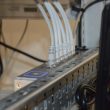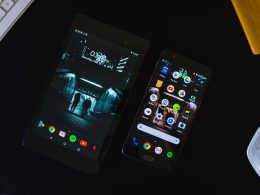In just a few short years, the Internet of Things (IoT) has transformed the way we live and work. From smart homes to wearable technology, IoT devices have become an integral part of our daily lives. But what about the future of connectivity? How will IoT revolutionize telecom and change the way we communicate with each other? In this blog post, we’ll explore how IoT is transforming telecommunications and what it means for businesses and consumers alike. Get ready to dive into the exciting world of connectivity!
What is the Internet of Things?
The Internet of Things, or IoT, is a network of physical devices, vehicles, home appliances, and other items embedded with electronics, software, sensors, and connectivity tools that enable these objects to connect and exchange data. Essentially, the IoT is a giant network of connected “things” that can collect and share data about themselves and their surroundings.
IoT has the potential to revolutionize the telecom industry by enabling a new level of connection between people and devices. With IoT, telecom providers can offer innovative new services that make it easier for people to stay connected to what’s important to them. For example, imagine a service that could automatically turn off your home’s lights when you leave for work in the morning, or one that could send you an alert if your child doesn’t arrive home from school on time.
IoT also has the potential to improve network efficiency and quality by helping telecom providers better understand how their networks are being used. For example, by collecting data on usage patterns, providers can optimize their networks to reduce congestion during peak times. Additionally, because IoT devices are often equipped with sensors that can detect things like temperature or vibration, they can be used to monitor network infrastructure for problems before they cause disruptions.
Ultimately, IoT has the potential to change the way we live and work by making it easier for us to stay connected to the people and things we care about. And as more and more devices become connected
How IoT is changing the telecom industry
IoT is changing the telecom industry by providing new opportunities for communications service providers (CSPs). IoT-enabled devices are generating a huge amount of data that can be used to improve customer experience and operational efficiency. CSPs can use this data to offer new services, such as predictive maintenance and location-based services. They can also use it to improve network performance and reduce costs.
The growth of IoT is also driving change in the way CSPs interact with their customers. In the past, CSPs have been largely focused on selling voice and data services to businesses. However, IoT opens up the possibility of selling connected devices and services direct to consumers. This could lead to a more intimate relationship between CSPs and their customers, as well as new revenue streams.
The telecom industry is also being affected by the wider adoption of cloud computing. Many CSPs are now offering cloud-based services, such as storage and computing power, to their business customers. This move to the cloud is driven by the need to provide more flexible and scalable services. It is also driven by the need to reduce costs.
The adoption of IoT is causing major changes in the telecom industry. CSPs are under pressure to adapt their business models to take advantage of this new era of connectivity.
The benefits of IoT for telecom
IoT is transforming the telecom industry by providing a new level of connectivity and intelligence. By connecting devices and sensors to the network, telecom operators can gain insights into customer behavior and usage patterns. This data can be used to improve customer service, optimize networks, and develop new revenue-generating services. IoT also enables new types of applications such as remote monitoring, asset tracking, and predictive maintenance.
In addition to improving operational efficiency, IoT can also help telecom operators reduce their environmental impact. For example, by deploying smart meters and other sensors, operators can manage energy consumption more effectively. And by connecting devices to the network, operators can enable customers to remotely control their environment (e.g., turning off lights or adjusting thermostats) in order to conserve energy.
The benefits of IoT for telecom are numerous and far-reaching. By harnessing the power of data and connectivity, IoT is helping telecom operators drive innovation and create new value for their customers.
The challenges of implementing IoT in telecom
The internet of things (IoT) has the potential to revolutionize the telecom industry by providing a new level of connectivity and data exchange. However, there are many challenges associated with implementing IoT in telecom.
One of the biggest challenges is ensuring security and privacy for IoT devices and data. As more devices are connected to the internet, there is an increased risk of hacking and cyberattacks. Telecom companies must therefore invest in robust security measures to protect their networks and customers’ data.
Another challenge is managing the huge volume of data generated by IoT devices. This data must be stored, processed, and analyzed in a way that enables telecom companies to glean insights that can improve their operations and services. This requires significant investment in data management infrastructure and capabilities.
Finally, interoperability is another key challenge for telecom companies looking to implement IoT. There must be a way for different devices from different manufacturers to communicate with each other seamlessly in order to realize the full potential of IoT. This can be a complex undertaking given the diverse range of devices and technologies involved.
The future of IoT and telecom
The future of telecom lies in the Internet of Things. This relatively new technology allows for devices to be connected to the internet and to each other, allowing for a wealth of new possibilities in terms of both efficiency and convenience. For instance, your fridge could automatically order more milk when you’re running low, or your thermostat could adjust itself based on your schedule.
In the business world, IoT can be used to streamline operations and cut costs. For example, a manufacturing company could use sensors to track the performance of their machines in real-time, and make adjustments accordingly. Or a logistics company could use IoT to keep track of their fleet of vehicles and ensure that they are always using the most efficient route.
The possibilities are endless, and it’s likely that we will see more and more businesses adopting IoT in the coming years. Telecom companies are already starting to invest in this technology, and it’s likely that they will play a big role in its development.












